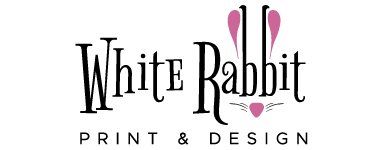Graphic Design
Whether it is for consultation or overseeing the project from start to finish. We can provide both digital and printable assests that help get the message out.
Consulation
If you're looking to create high-quality printed materials or design an eye-catching visual campaign for your brand, a graphic design or print consultation can be incredibly helpful. During a consultation, a designer or print expert will work with you to discuss your needs, preferences, and budget, and offer their professional advice on how to achieve your goals
Logo & Branding
With our custom logo and branding services, you can build trust and credibility with your audience, stand out from your competitors, and create a lasting impression that truly represents your business. Whether you're just starting out or looking to refresh your brand, we can help you create an identity that you can be proud of. Contact us today to learn more!
Fine Art Reproduction
Whether you're an established artist looking to expand your reach, or a newcomer looking to make a name for yourself, fine art reproductions can be a valuable tool to help you achieve your goals. Contact us today to learn more about our fine art reproduction services and how we can help you take your art to the next level.
What is Graphic Design?
Graphic design is the art and practice of creating visual content to communicate information or messages to a target audience. This can include the design of logos, typography, layouts, illustrations, and images for various mediums such as print, web, mobile devices, advertising, and packaging.
Graphic designers use their creativity, technical skills, and knowledge of design principles to develop visual solutions that are effective, aesthetically pleasing, and communicate the intended message. They also collaborate with clients, art directors, and other team members to develop a design concept, present ideas, and make revisions based on feedback.
Some of the key elements of graphic design include color, shape, texture, balance, contrast, and hierarchy. By using these elements effectively, designers can create designs that stand out and effectively communicate the desired message to the target audience.
Consulations
In a graphic design consultation, the designer will discuss your vision for your brand and create designs that fit your style and messaging. They will use their expertise to choose the right color schemes, typography, and layout to create a design that will help you stand out and communicate your message effectively. They may also offer guidance on how to make your designs more accessible, user-friendly, or responsive across different mediums.
Similarly, in a print consultation, a print expert will discuss your printing needs and offer advice on how to achieve the best results. They may provide recommendations on the type of paper or material to use, the best printing method, and the most cost-effective way to produce your materials.
Some graphic design or print consultations may include a fee, depending on the scope of the project and the level of expertise required. However, investing in a consultation can save you time and money in the long run, as it ensures that you get the best possible results for your investment. With the right guidance, you can create designs and printed materials that will help your brand stand out and achieve its goals.
Working with our Design Team or Any Graphic Designer
- Clearly communicate your vision: Start by clearly communicating your vision and goals for the project. Explain what you want the design to achieve, what message it should convey, and who your target audience is. The more specific you can be about your needs and preferences, the better.
- Share examples: Provide your designer with examples of designs that you like and explain what you like about them. This can help the designer better understand your style and preferences.
- Be open to suggestions: While it's important to communicate your vision, it's also important to be open to the designer's suggestions and ideas. They have expertise in design and may be able to offer valuable insights and solutions that you haven't considered.
- Provide feedback: Once your designer presents you with a draft, provide clear and constructive feedback. Be specific about what you like and don't like, and offer suggestions for improvements. Avoid vague statements like "I don't like it" or "It's not working for me."
- Respect their expertise: Remember that the designer is the expert when it comes to design. While you may have opinions about what you want, it's important to trust their expertise and let them do what they do best.
- Be timely: Respond to your designer's requests and feedback in a timely manner. This will help ensure that the project stays on track and is completed on time.
- Have a clear agreement: Before starting the project, make sure you have a clear agreement in place that outlines the scope of the project, the timeline, and the budget. This can help avoid misunderstandings and ensure that everyone is on the same page.
